Has something ever made you so happy that you’re embarrassed? To live and die by how five grown men play with a ball is not something to be proud of. I’m many hundreds of dollars poorer in the upper bowl of Madison Square Garden in a seething mass of orange and blue, watching the Knicks — A team I have supported for many years, and which has given me little in return —play the Indiana Pacers in Game 1 of the Eastern Conference finals. There is a faint pressure in the corner of each eye, which is the tear duct opening ever so slightly, just getting itself ready, because the Knicks have gone up 10 with a few minutes left, putting them on the brink of winning their first conference finals game in 25 years.
This delerium is going on in Madison Square Garden, “The World’s Most Famous Arena,” which is inexorably linked to one of the greatest boondoggles in NYC city planning. If you blew a deep hole in the MSG court, you would reveal the busiest train station in America. The Garden is built on top of Penn Station, like a giant lid, and has been the chief obstacle to the station’s improvement for decades. These two buildings, the stadium and the station, have been locked in a dance since before they were neighbors. As the name suggests, Madison Square Garden once stood just north of Madison Square Park, a stunning, cream and white terracotta building with a tower inspired by the Giralda in Seville.
One of the earliest uses of the arena, along with indoor chariot races and boxing, was for multi-day speed walking competitions.
This Madison Square Garden was designed by architect Stanford White, whose partner at the firm McKim, Mead, and White, Charles McKim, took primary responsibility for designing a new terminal for the Pennsylvania Railroad between Seventh and Eighth Avenue, a gargantuan plot of land cleared by eminent domain that would collect the city’s railroad network. McKim’s Penn Station is almost painful to behold for anyone who has experienced the current iteration. From the air, it looks like a Roman precinct has been teleported into Midtown. Penn Station was split into three parts lined up in procession: a portal inspired by St Peter’s Square. A soaring waiting room proportioned according to the Baths of Carcalla - the largest enclosed building in ancient Rome. And, finally, the glass and iron train shed itself.
Both buildings would be demolished due to the shifting economic fortunes of their owners and the changing habits of the city, and one would eventually kill the other. The Garden lost money almost immediately, too small for marquee boxing matches, too large for a reliable run of smaller shows. The building was torn down in 1925 to build the New York Life Insurance Company headquarters. A third, architecturally unremarkable Garden would open on Eighth Avenue that year. In 1946, the New York Knickerbockers made their debut in this building and played there for the next twenty-two years. Down Eighth Avenue, after World War 2, with the construction of the interstate highway system and the introduction of steady passage airline service, Penn Station fell into disrepair. Businessman Irving Mitchell Felt bought the development rights to Penn from the failing railroad in 1963. Felt’s company had recently bought a 40% stake in the Garden, and he proposed knocking down the station’s above-ground structures and capping the underground tracks with a new arena, the structure that stands there today. Upon experiencing the new, subterranean Penn Station, the critic Vincent Scully wrote, “one entered the city like a god. One scuttles in now like a rat.”
This story is fairly well known. The destruction of the old Penn Station catalyzed the historic preservation movement and led to the establishment of the Landmarks Preservation Commission. Less well-known is the procession of schemes and aborted ideas that have gripped the blocks around Madison Square Garden ever since. By the 70’s — the Knicks Championship years — the city was entering its Taxi-Driver nadir, near bankruptcy, riddled with crime and poverty, and hemorrhaging population to the suburbs. Partially to keep the Knicks and Rangers in Manhattan (the Meadowlands sports complex beckoned across the river in Jersey), the City entered a complex back-and-forth with the Garden over its tax status, which resulted in a major concession. Since 1980, the Garden has paid no property taxes to the City under the condition that all Knicks and Rangers home games must be played in the Garden. Since then, the City has forgone roughly a billion dollars in revenue to keep the Garden where it is. The exemption worked; the last serious talk of stadium relocation was to another site in Manhattan on the back of the city’s failed bid for the Olympics in 2004. After that, the Garden briefly pushed to move across the street, to the site of the massive Farley Post Office complex - but was rebuffed because transit officials wanted the Post Office reserved as a site for future improvements to Penn. Farley, designed by who else but McKim, Mead, and White, was converted into a new Amtrak waiting area to relieve pressure on Penn in a small revenge from the ghost of the old station.
The current arena is now firmly entrenched. It received a major renovation in 2011, and its presence remains a stubborn feature of any vision for the neighborhood, or the spaghetti of busy train tracks under it. People have proposed building a new station around it, lifting it up to expand the station below, and removing it completely. Many surrounding blocks have been snatched up by Vornado Realty Trust, one of the city’s largest property companies, owned by Trump donor and sometimes business partner Steven Roth. In 2022, Governor Kathy Hochul announced a plan to supersede the city’s zoning to allow 10 new office towers around the Garden, with revenue going towards a 7 billion dollar refurbishment of Penn. Her timing couldn't have been worse, as COVID had dried up the city’s office demand, and commercial real estate values sank. People asked why the State was stepping on the City’s toes to largely benefit one very wealthy developer, and if office space in a time of skyrocketing housing costs and a growing homelessness was really what we needed. A year later, Hochul announced the station renovation would go ahead without all the office towers, calling into question why she ever promised them in the first place. Vornado has still managed to erect some new office properties, stunning in their boringness, an extension of Hudson Yards east into midtown.
The only real heartbeat of this area is sports, and the money that generations of fans shell out on Knicks and Rangers games, often to see them lose, lines the pockets of owner James Dolan, as odious a New York businessman as ever existed. Dolan, for years, tinkered relentlessly with the team to its detriment. He insisted that his awful cover band play before concerts at MSG. He has installed facial recognition at the Garden to ban people he doesn’t like from Rangers and Knicks games. He had Charles Oakley, a beloved former player and one of the saints of the team, forcibly removed from the arena during a game for being critical of him. Through it all, he has raised prices to the point where a working-class New Yorker could conceivably spend more than their yearly income to sit in a good seat. Dolan is the most comic character in the cast of villains who control the area. The station destroyed the neighborhood that had stood there before it was itself displaced by the Garden. Things have been smashed and rebuilt all around it for decades, and every time the outcome is muddled at best. What economic activity does occur here lines the pockets of some of the worst people in the city. When I talk to planners about Penn Station, the tenor is always the same: An evil place, I wish we could rip it all down and start again.
Here’s the thing. It’s a remarkable place. Not because it looks good or works well, but because of what has happened there. Older generations of Knicks fans sometimes call MSG “the Mecca,” short for the Mecca of Basketball. New York City has more basketball hoops per capita than anywhere in the world. Even in the internet age, the hollow boing of kids dribbling the ball down the street is a defining sound of the summer. The MC of a streetball league Uptown once said to me, “Basketball is the heartbeat of the city, the courts are the lungs.” Both my grandparents were dancers and I often think of Basketball as a muscular, commercialized dance. Our culture as a city guarantees that the place where New York comes to watch professional basketball is automatically filled with meaning. The longer the Garden has stayed in one place, the more meaning it’s accumulated. You walk in, and the light is right, and the wooden ceiling stretches over you. The ceiling always reminds me of the photographer Walter Ioos, who always tilted the camera up so the players looked even bigger than they are, and so always had the ceiling in frame.
The only Knicks playoff win I witnessed with my own eyes was a win against the Atlanta Hawks in 2021. Andrew Cuomo lifted the ban on large indoor gatherings in place since the start of the pandemic, specifically for the game. The prior year had been dark. Death was everywhere, and then the city exploded in protest over the murder of George Floyd into a reckoning with our own Police Department. Great change felt possible, and then nothing really changed, except the Knicks, who had been awful, were suddenly ok and squeaked into the playoffs. One of the crystal clear memories I have of those days is lowering my blinds to block out the light from an ambulance idling outside my window because the Knicks were on. That playoff win at MSG, in a series we would eventually lose, is probably the closest I’ll ever come to going to an evangelical tent revival. The catharsis of gathering in thousands, not for a protest or to stand in line for a vaccine, was lost on absolutely no one.
The pleasure is enhanced by the density, by the fact that we are rudely right in the middle of Midtown. That night, in what would become something of a tradition, the fans spilled into 7th Avenue, and in the glow of billboards for Chipotle and Nike, we shut down one of the city’s most important arteries. The city’s overlords and real estate titans have done their absolute best to sanitize Midtown, but they will never clean up the Garden, not as long as the Knicks exist and drug addicts in town to score are deposited by train and bus onto the streets around Penn. A year ago, Vornado finally realized there was money to be made by pedestrianizing a small strip of 33rd Street adjacent to the Garden and getting all these fans and Penn Station commuters to buy tacos and gelato. The Knicks have been hosting watch parties on this street, which have attracted legions of fans who want to be close to the action but can’t afford the ticket. In the wake of a series-clinching win against Boston this year, this area became a bacchanalia. Fans climbed the billboards and streetlights ringed with NYPD security cameras. The most sterile commercialized bits of the cityscape were obscured by the sheer number of people.
This is a rare sight in America, a truly urban, spontaneous celebration. The majority of sports arenas in this country are temples in the middle of giant suburban parking lots. The planners who present reams of information and data as to why the Garden should be moved ignore the argument as to why it shouldn't: feelings. The frontiers of my interactions with other people have been greatly expanded, even when I’m far from Midtown. Neighbors and co-workers, and total strangers approach me on the street. Cities can be lonely, but wearing a Knicks hat in May, you might as well have a T-shirt on that says “talk to me.”
The night of the Pacers game, we lost after a circus shot by Tyrese Haliburton sent it to overtime. It was one of those nights where you feel like the universe is teaching you a lesson you don’t understand and are not sure what you’ve done to deserve. I will endure serious, although temporary, financial hardship for being here. On my way out of the Garden, I walk behind an older man in jeans and a vintage Knicks jacket all the way to the subway. He’s alone, and his grey hair gives me visions of dying before I ever see this team win it all. One stop before I get off, a man comes through the doors - he looks around at the few people remaining on the train in orange and blue and yells, “What. The. FUCK!” A few people laugh, and I smile. If the Garden is Mecca, then this sad train ride is just part of the Hajj. As a joke (I think), someone texts me a bible quote “I BELIEVE THE SUFFERINGS OF THIS PRESENT TIME ARE NOT WORTH COMPARING TO THE GLORY ABOUT TO BE REVEALED TO US.” It might as well be the motto of life in the City.




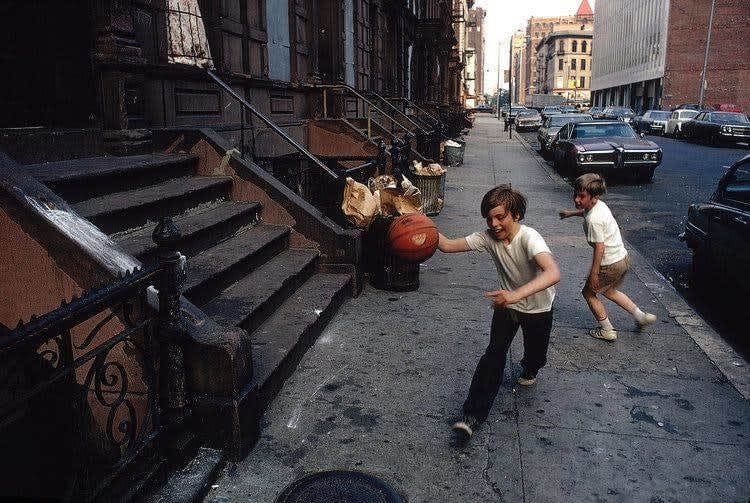
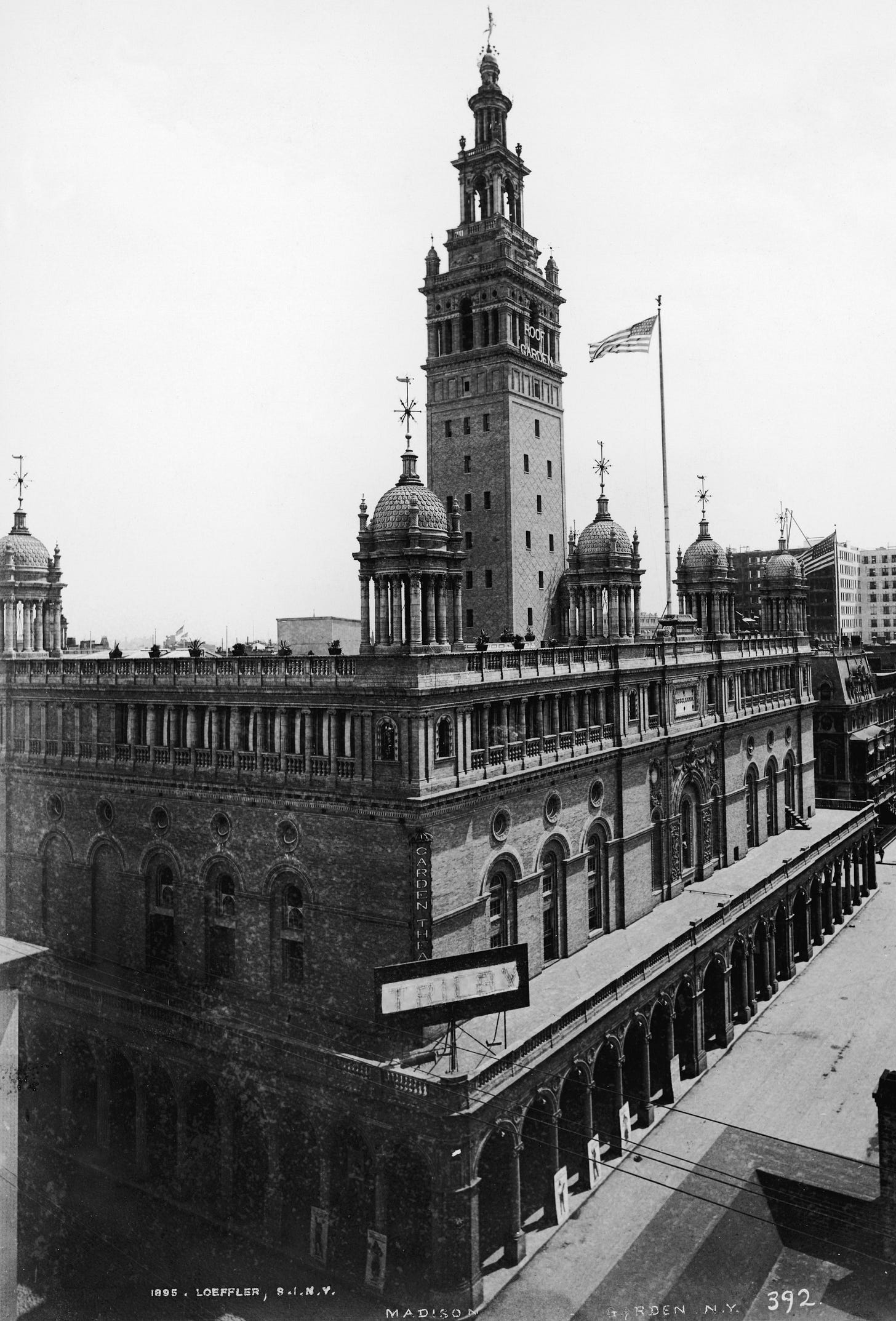

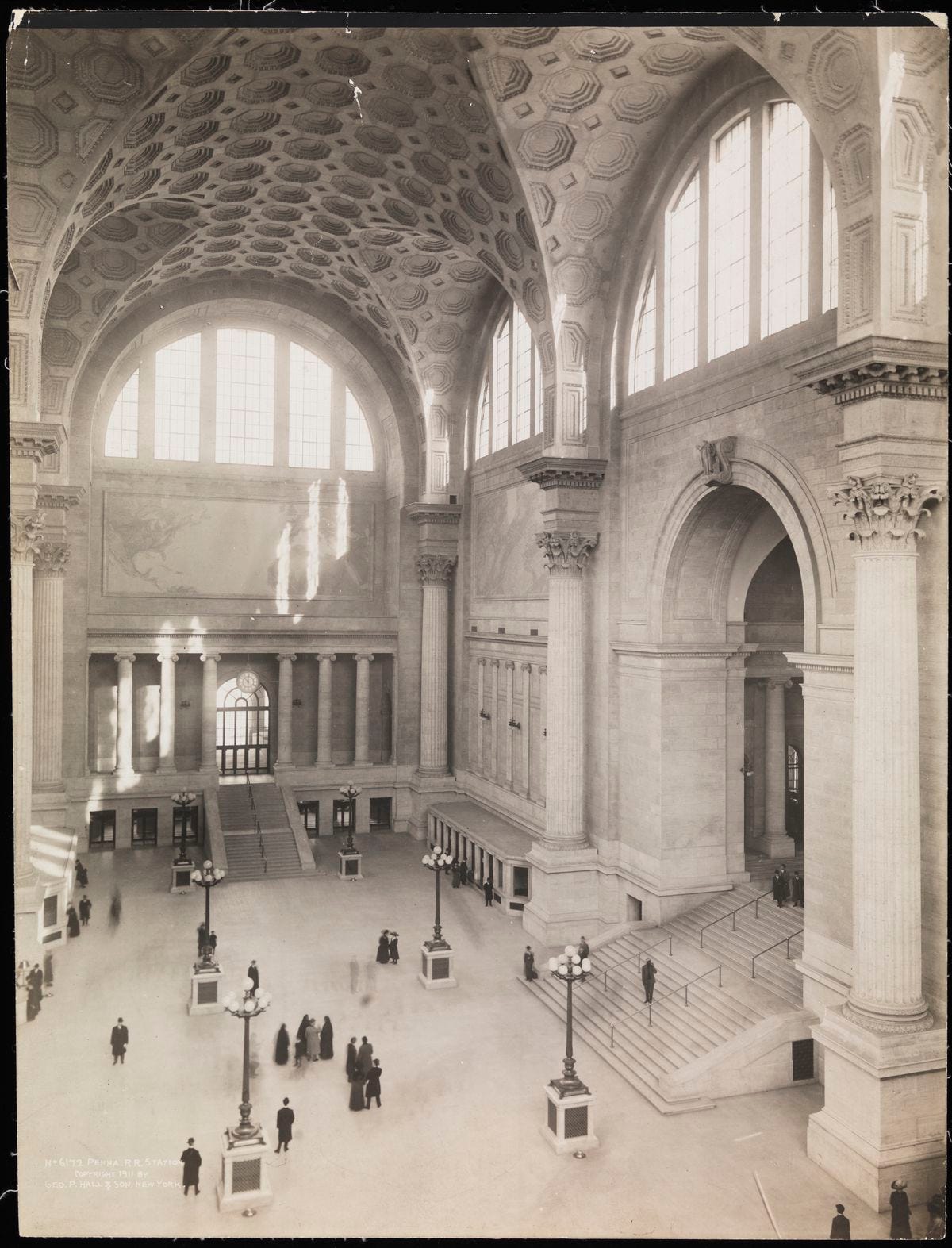
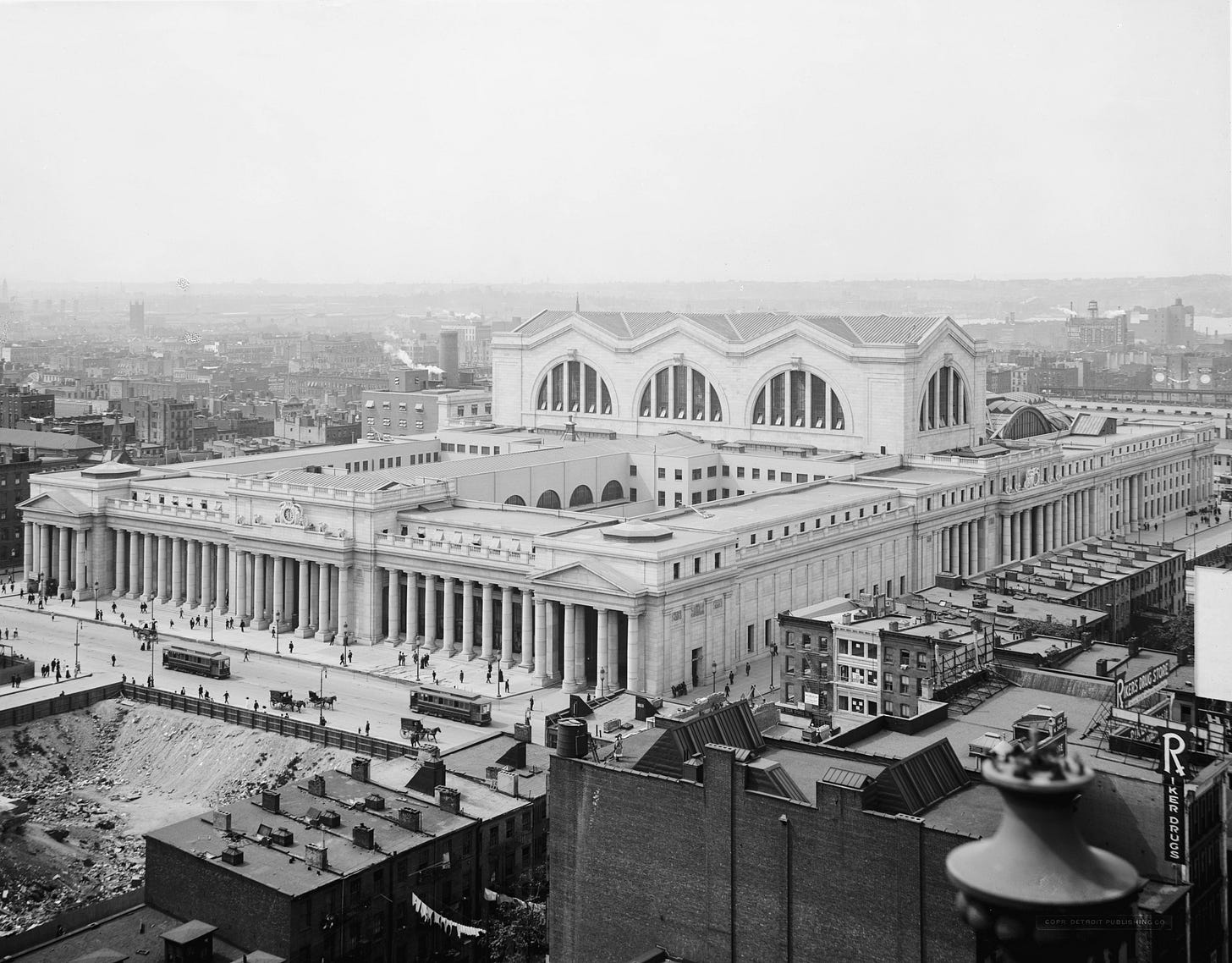
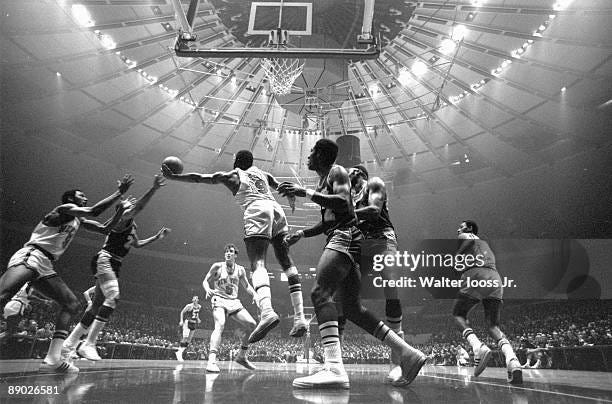

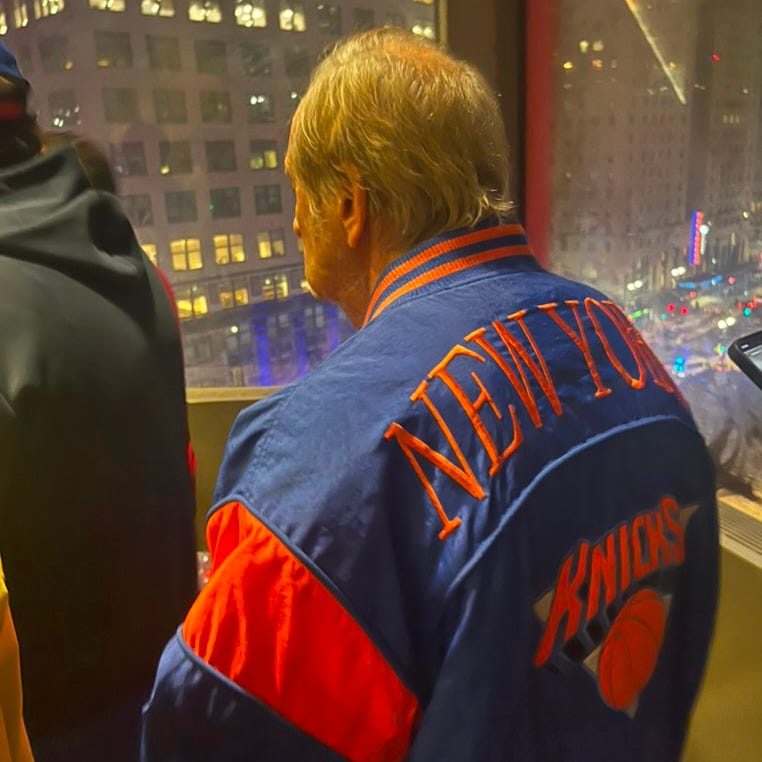
shared this in my company sports slack (we have many suffering Knicks fans) great piece Matt!
"When I talk to planners about Penn Station, the tenor is always the same: An evil place, I wish we could rip it all down and start again." And lifelong New Yorkers, too. I'm so that I never knew the original Penn Station. Thank you, Jackie Kennedy, for saving Grand Central Station.